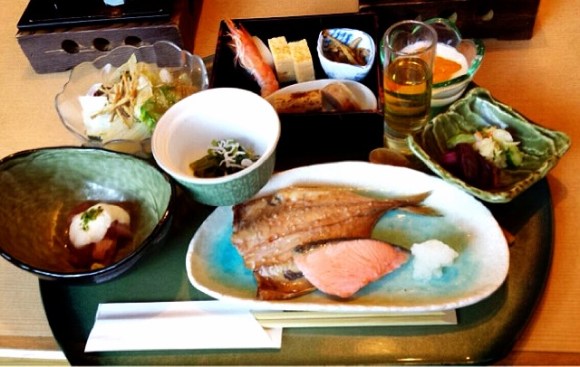
If you’ve noticed, many of our writers here at Rocketnews24 have crossed the seas to make Japan their second home. Sure, we love the local flavor, but sometimes we just crave a solid meal that smells of our hometown. The same goes for Japanese nationals living abroad.
Even though Japanese cuisine has more or less infiltrated most of the major cities worldwide, domestic foodstuffs and condiments still remain mostly inaccessible and rare in most countries. Japanese blogger Madame Riri shares a list of 10 Japanese foods that can be made at home, no matter where that may be! We’d like to call it the lifesaver list for Japanese abroad, or the inspiration list for non-Japanese who would love an authentic taste of Japan in their own kitchen!
1. Pseudo Chinese Noodles
In Japan, yakisoba or Chinese noodles can be readily bought at supermarkets for as low as 30 yen (US$0.30) per serving. These versatile noodles are a common sight on the dining tables of Japanese families, be it stir-fried, in soup, or even as hiyashi chuka (chilled Chinese noodles), disputably the most popular Chinese dish among the Japanese. But in many western countries, the Asian noodles tend to be pricey and sometimes hard to find. But here’s a neat trick that turns the number one “noodle” in the West – Spaghetti – into pseudo Chinese noodles in your very own kitchen!
Simply throw in some sodium bicarbonate, otherwise known as baking soda, together with some salt when boiling the pasta. And that’s all there is to it! The sodium bicarbonate works its magic on the pasta, giving it a texture and taste that is uncannily similar to Chinese noodles. Madame Riri also suggests experimenting with pasta of different thickness to suit the dish; spaghetti for champon and cappellini (angel hair pasta) for ramen.
2. Homemade Natto
Natto, fermented soybeans, is a traditional Japanese food known for its slimy texture and characteristic smell, which earned it the nickname of “stinky beans” among many non-Japanese people. If you’re able to stand the stink though, this Japanese acquired taste is a healthy source of protein and vitamins, and is said to prevent cancer, lower your chances of heart attacks and enhance health in general. While natto is commonly found in Japan at economical prices, exported batches available overseas are often expensive and less flavorful, having had its strong smell and taste mellowed down to adapt to foreign consumer tastes.
Ultimately, natto is made from soybeans, which are way more accessible than the fermented food itself in most countries. All you have to do is soak the beans in water for half a day or longer, boil or steam the beans for a couple of hours so that they’re thoroughly cooked and soft, then put them in a container for fermentation. Keeping the beans at a temperature of 40 degrees Celsius is the key to ensure quality fermentation, which can be a challenge to maintain, but if you have a yogurt maker at home, it will make the process as simple as pouring the cooked beans in and switching the machine on. Soaking and boiling the beans may be slightly time-consuming, but having made homemade natto is definitely an awesome addition to your Facebook profile if you ask me!
3. Sesame Dressing
The all-time favorite Japanese style dressing within and outside of Japan. Its delicate balance of sweet, sour and savory flavors, slightly milky texture, and the appetizing fragrance of sesame seeds works wonders to invigorate appetites, and is most commonly used on salads (duh!), cold tofu, or as a dipping sauce for cold shabu-shabu.
You might not be able to find it at your local supermarket, and even if you do, it probably costs twice or three times the price it is in Japan. The good news is, as sophisticated as it sounds, you can actually mix up your own sesame dressing with just a couple of simple ingredients. All you need is roasted sesame seeds, mayonnaise and rice vinegar (best to use Japanese variations for these two to achieve authentic flavor), and a pinch of sugar and salt if you prefer. Mix around until you get the right consistency and taste you like, and voila! You’re ready to wow your friends with a Japanese style dish!
4. Homemade Tofu
Tofu (bean curd) is recognized as a healthy ingredient pretty much all over the world. The soybean product is stunningly cheap in most Asian countries, but can be slightly pricey over in the West. Apparently it costs about 400 yen (US$4) in Paris, more than four times its price in Japan. Why pay the hefty price tag when you can make your bean curd out of soy milk?
Apart from soy milk, you will need some nigari (magnesium chloride) to help the soy milk coagulate into a solid form. Be sure to use food grade magnesium chloride flakes or liquid for this. Detailed instructions can be found on this wonderful recipe!
5. Shiozake
Unlike smoked salmon, shiozake (salted salmon) can rarely be found in supermarkets outside of Japan. But fresh salmon cuts are commonly sold in supermarkets, especially in the West. Simply by sprinkling salt (amounts of 2% the weight of the filet seems to be the perfect ratio) over the fresh salmon and letting it sit in the refrigerator for two days, you’ll have deliciously flavored salted salmon ready for cooking!
Preparing the shiozake is as simple as pan-frying it, or putting it on the grill for a couple of minutes. Enjoy it whole and fresh from the pan, cut up as fillings for a sandwich or sushi, or break it down into flakes as a topping for salads or onigiri (Japanese rice balls)!
6. Dried Mackerel
Similar to salted salmon, dried mackerel is another popular Japanese food that is rarely available outside of Japan, but can be easily made with simple ingredients at home. In this variation, you’ll need fresh horse mackerel, some salt, and skewers. Carefully remove the scales of the fish, then slice the fish open from its back, remove its innards, then clean and pat it dry with a paper towel. Sprinkle some salt on both sides. Put a skewer through the fish horizontally to keep it flat and open as it dries, and hang it up, leaving it to air dry for a day in a well-ventilated place (just like hanging out your laundry). Pan-fry or grill it and you’ll have an authentic Japanese home-cooked dish!
7. Umeshu
Umeshu (plum wine) is a type of Japanese alcohol that can be easily made at home. Although umeshu can be bought at supermarkets or convenience stores in Japan, many families enjoy the process of concocting their own variation at home when plums are in season, usually from June through July.
Even if you reside overseas and have no access to Japanese liquor, you can easily make your own umeshu out of fresh plums, vodka and rock sugar. Wash and dry the plums (you could also use apricots as an alternative if you can’t get ume plums), layer the plums and rock sugar proportionally in a large jar or plastic container, then pour in the vodka. Make sure the container is sealed air-tight. Let it soak for at least three months before enjoying your homemade umeshu. Patience is the key! The alcohol-soaked fruits can also be eaten! Have it with your glass of umeshu, or with a scoop of vanilla ice cream and a drizzle of honey as a classy dessert!
8. Handmade Udon
Udon, the thick, chewy Japanese noodles popular among Japanese and foreigners alike, takes a good kneading to achieve its characteristic texture, but requires nothing more than medium ground wheat flour, water and some salt to make! Traditional methods involve stepping on the dough in order to make it nice and chewy. If you have children brimming with unspent energy, or would love some interesting interaction at a home party, here’s the recipe for this marvelous kitchen activity!
9. Warabi-mochi
If you’re a fan of traditional Japanese sweets, you must be familiar with mochi. It can be challenging to make since it involves strenuous pounding of glutinous rice flour, but warabi-mochi, on the other hand, can easily be made by heating potato starch, sugar and water over a stove. It’s so easy to make, we won’t even bother writing it out, just check out the video below!
10. Homemade Miso
Of course, the all-mighty seasoning that represents Japanese cuisine, miso! Anybody who loves Japanese food knows about miso soup. But did you know that the Japanese use miso in a multitude of ways? Miso is used in stews, stir-fry and even grilled dishes. It’s barely even exaggerating to say that the Japanese can’t live without it. But like many of the items listed above, miso is difficult to get, or expensive, in many countries apart from Japan. You’ll need koji (fermented rice) in order to make your own miso, and it takes quite a bit of time and effort, but if you’re a Japanese person living overseas with limited access to miso, this could be the best way out!
Source: Madame Riri
Top image: RocketNews24
Inset images: Shokusai Yawa, Gajetto Tsushin, E.recipe, Ono Blog, Okaimono Gekijo, CHR’s Diary, Wikipedia, Shinshu Ogawa no Sho

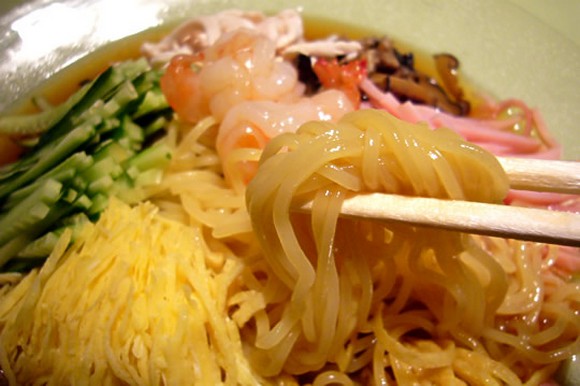

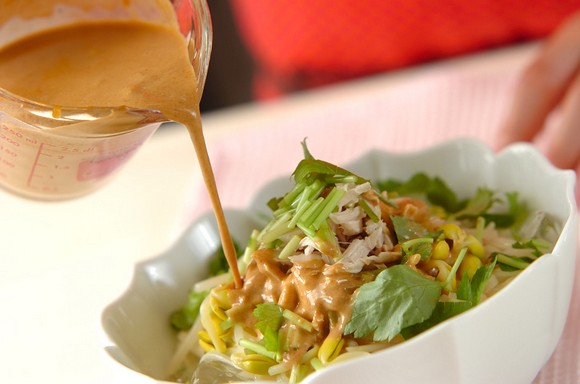
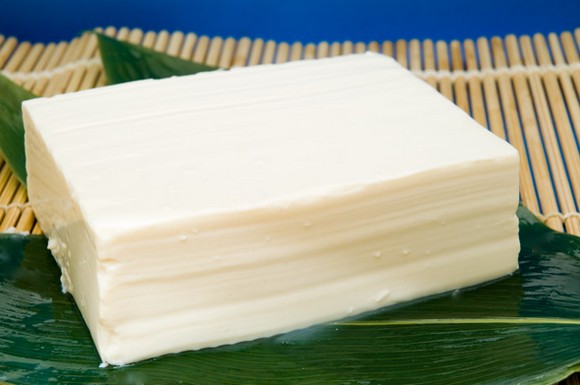
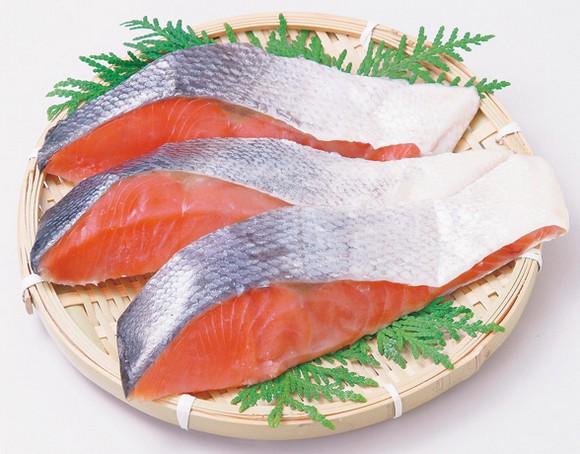

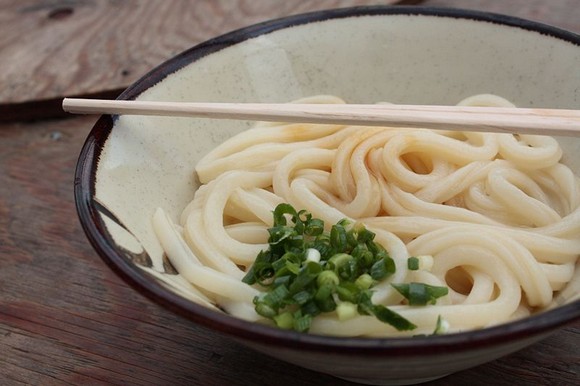

 We tried making natto the old-fashioned way, and the result was unexpected but delicious 【SoraKitchen】
We tried making natto the old-fashioned way, and the result was unexpected but delicious 【SoraKitchen】 What’s really for breakfast? 20 Japanese people give us a peek at their morning meal【Photos】
What’s really for breakfast? 20 Japanese people give us a peek at their morning meal【Photos】 Around Japan in 47 rice balls: Mr. Sato buys each prefecture’s musubi all from one Tokyo shop
Around Japan in 47 rice balls: Mr. Sato buys each prefecture’s musubi all from one Tokyo shop Craving ramen, but can’t find decent noodles? Transform your spaghetti with this pasta hack!
Craving ramen, but can’t find decent noodles? Transform your spaghetti with this pasta hack! Natto for beginners? How to half-make Japanese fermented soybeans at home【SoraKitchen】
Natto for beginners? How to half-make Japanese fermented soybeans at home【SoraKitchen】 Sandwiches fit for a sumo served up in Osaka【Taste Test】
Sandwiches fit for a sumo served up in Osaka【Taste Test】 McDonald’s new Happy Meals offer up cute and practical Sanrio lifestyle goods
McDonald’s new Happy Meals offer up cute and practical Sanrio lifestyle goods Japan’s massive matcha parfait weighs 6 kilos, contains hidden surprises for anyone who eats it
Japan’s massive matcha parfait weighs 6 kilos, contains hidden surprises for anyone who eats it Historical figures get manga makeovers from artists of Spy x Family, My Hero Academia and more
Historical figures get manga makeovers from artists of Spy x Family, My Hero Academia and more Limited-edition Carbonara Udon will anger noodle purists and pasta lovers 【Taste test】
Limited-edition Carbonara Udon will anger noodle purists and pasta lovers 【Taste test】 Beautiful Red and Blue Star luxury trains set to be Japan’s new Hokkaido travel stars
Beautiful Red and Blue Star luxury trains set to be Japan’s new Hokkaido travel stars Tokyo Tsukiji fish market site to be redeveloped with 50,000-seat stadium, hotel, shopping center
Tokyo Tsukiji fish market site to be redeveloped with 50,000-seat stadium, hotel, shopping center Japanese ramen restaurants under pressure from new yen banknotes
Japanese ramen restaurants under pressure from new yen banknotes Red light district sushi restaurant in Tokyo shows us just how wrong we were about it
Red light district sushi restaurant in Tokyo shows us just how wrong we were about it Studio Ghibli glasses cases let anime characters keep an eye on your spectacles
Studio Ghibli glasses cases let anime characters keep an eye on your spectacles All-you-can-drink Starbucks and amazing views part of Tokyo’s new 170 meter-high sky lounge
All-you-can-drink Starbucks and amazing views part of Tokyo’s new 170 meter-high sky lounge French Fries Bread in Tokyo’s Shibuya becomes a hit on social media
French Fries Bread in Tokyo’s Shibuya becomes a hit on social media Studio Ghibli releases new action figures featuring Nausicaä of the Valley of the Wind characters
Studio Ghibli releases new action figures featuring Nausicaä of the Valley of the Wind characters New private rooms on Tokaido Shinkansen change the way we travel from Tokyo to Kyoto
New private rooms on Tokaido Shinkansen change the way we travel from Tokyo to Kyoto Beautiful Ghibli sealing wax kits let you create accessories and elegant letter decorations【Pics】
Beautiful Ghibli sealing wax kits let you create accessories and elegant letter decorations【Pics】 Studio Ghibli releases Kiki’s Delivery Service chocolate cake pouches in Japan
Studio Ghibli releases Kiki’s Delivery Service chocolate cake pouches in Japan New definition of “Japanese whiskey” goes into effect to prevent fakes from fooling overseas buyers
New definition of “Japanese whiskey” goes into effect to prevent fakes from fooling overseas buyers Our Japanese reporter visits Costco in the U.S., finds super American and very Japanese things
Our Japanese reporter visits Costco in the U.S., finds super American and very Japanese things Studio Ghibli unveils Mother’s Day gift set that captures the love in My Neighbour Totoro
Studio Ghibli unveils Mother’s Day gift set that captures the love in My Neighbour Totoro New Japanese KitKat flavour stars Sanrio characters, including Hello Kitty
New Japanese KitKat flavour stars Sanrio characters, including Hello Kitty More foreign tourists than ever before in history visited Japan last month
More foreign tourists than ever before in history visited Japan last month New Pokémon cakes let you eat your way through Pikachu and all the Eevee evolutions
New Pokémon cakes let you eat your way through Pikachu and all the Eevee evolutions Sales of Japan’s most convenient train ticket/shopping payment cards suspended indefinitely
Sales of Japan’s most convenient train ticket/shopping payment cards suspended indefinitely Sold-out Studio Ghibli desktop humidifiers are back so Totoro can help you through the dry season
Sold-out Studio Ghibli desktop humidifiers are back so Totoro can help you through the dry season Japanese government to make first change to romanization spelling rules since the 1950s
Japanese government to make first change to romanization spelling rules since the 1950s Ghibli founders Toshio Suzuki and Hayao Miyazaki contribute to Japanese whisky Totoro label design
Ghibli founders Toshio Suzuki and Hayao Miyazaki contribute to Japanese whisky Totoro label design Doraemon found buried at sea as scene from 1993 anime becomes real life【Photos】
Doraemon found buried at sea as scene from 1993 anime becomes real life【Photos】 Tokyo’s most famous Starbucks is closed
Tokyo’s most famous Starbucks is closed One Piece characters’ nationalities revealed, but fans have mixed opinions
One Piece characters’ nationalities revealed, but fans have mixed opinions We asked a Uniqlo employee what four things we should buy and their suggestions didn’t disappoint
We asked a Uniqlo employee what four things we should buy and their suggestions didn’t disappoint Princesses, fruits, and blacksmiths: Study reveals the 30 most unusual family names in Japan
Princesses, fruits, and blacksmiths: Study reveals the 30 most unusual family names in Japan Japanese people list their top ten fish, and tuna isn’t number one
Japanese people list their top ten fish, and tuna isn’t number one Instant natto soba a suspiciously hot item so we check it out
Instant natto soba a suspiciously hot item so we check it out Japanese condiment company Kikkoman encourages Brits to desecrate white rice with tasty sauce
Japanese condiment company Kikkoman encourages Brits to desecrate white rice with tasty sauce Celebrate New Years in Pokémon style — with a monster ball filled with traditional osechi food!
Celebrate New Years in Pokémon style — with a monster ball filled with traditional osechi food! What does vegan ramen taste like? We try Veggie Brown Rice Ramen
What does vegan ramen taste like? We try Veggie Brown Rice Ramen Make your best-tasting onigiri taste even better with this easy recipe! 【RocketKitchen】
Make your best-tasting onigiri taste even better with this easy recipe! 【RocketKitchen】 Toast with fermented soybeans and honey may not be good-looking, but it is good eating
Toast with fermented soybeans and honey may not be good-looking, but it is good eating Google’s three most-searched Japanese foods in other countries surprises Japan
Google’s three most-searched Japanese foods in other countries surprises Japan Top 10 food disasters prepared by Japanese wives who have extraordinary talent in the kitchen
Top 10 food disasters prepared by Japanese wives who have extraordinary talent in the kitchen BonAppetour startup lets you cook and dine with Tokyo locals in their homes
BonAppetour startup lets you cook and dine with Tokyo locals in their homes New magic powder purports to make natto edible even for bean-haters
New magic powder purports to make natto edible even for bean-haters Do gohan no otomo, Japan’s traditional easy white rice toppings, work with toast?【SoraKitchen】
Do gohan no otomo, Japan’s traditional easy white rice toppings, work with toast?【SoraKitchen】 We try cooking yakisoba with real Japanese buckwheat soba【SoraKitchen】
We try cooking yakisoba with real Japanese buckwheat soba【SoraKitchen】 This super easy cold Korean spicy ramen dish will make summer 100 times more delicious
This super easy cold Korean spicy ramen dish will make summer 100 times more delicious Japan super budget dining – What’s the best way to spend 1,000 yen at Family Mart?
Japan super budget dining – What’s the best way to spend 1,000 yen at Family Mart? Pikachu, Kirby, Slime and Miffy served up as delicious dumpling delights【Pics, Video】
Pikachu, Kirby, Slime and Miffy served up as delicious dumpling delights【Pics, Video】
Leave a Reply